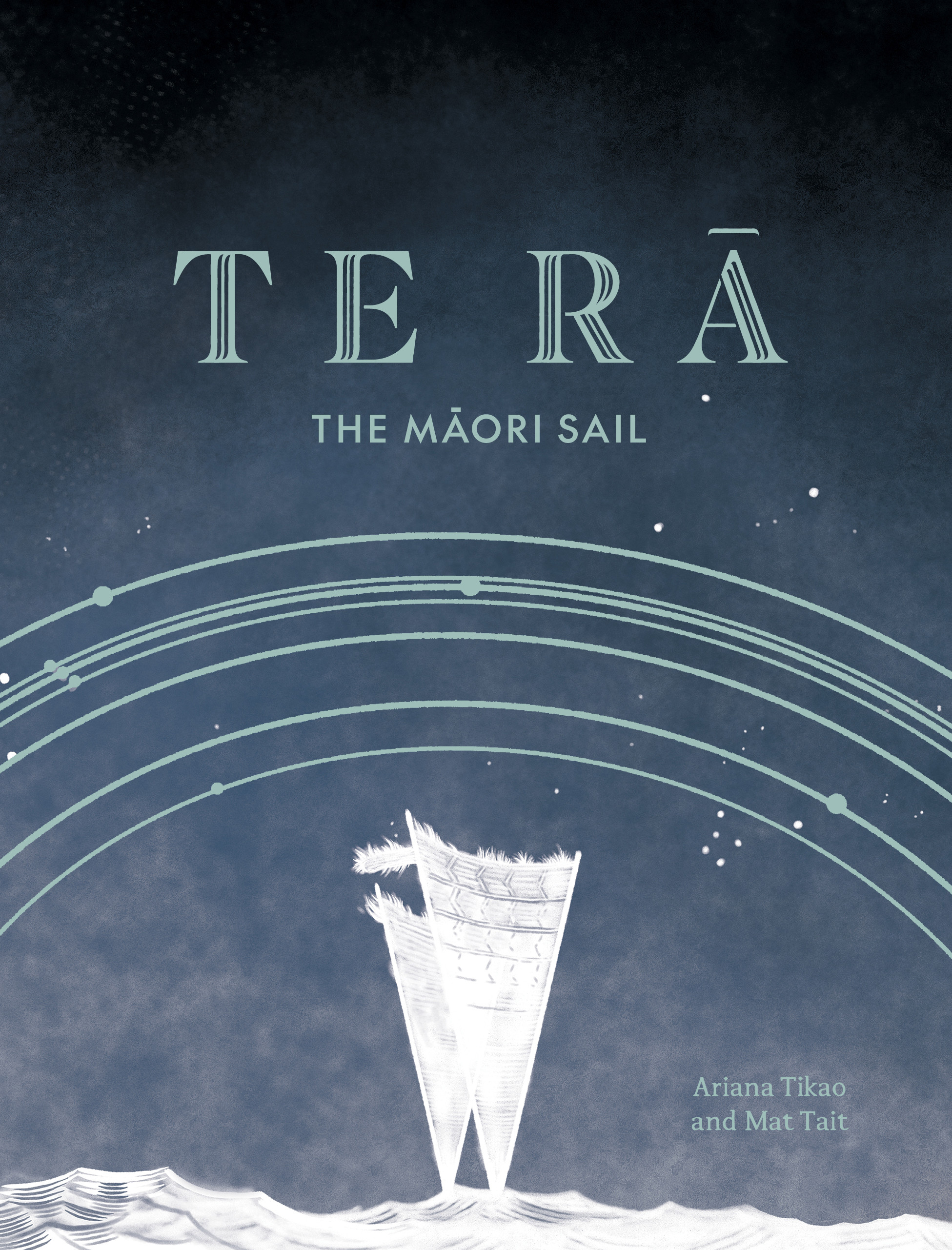Te Rā: The Māori Sail
Te Rā: The Māori Sail, by Ariana Tikao and Mat Tait. Christchurch Art Gallery (2023). RRP: $26.50. HB: 36pp. ISBN: 9781877375811. Reviewed by Kirsty Dunn.

‘…Let us bring in the fishers, the warriors, the weavers,
the healers, the connectors, the dreamers.
Let us bring back in all those who have become stray strands,
weave them in, weave them in, weave them all in…’
I was fortunate enough to meet Te Rā with a group of friends prior to the opening of the exhibition at Te Puna o Waiwhetū, Christchurch Art Gallery. It was a little surreal to be honest; to be allowed to touch the incredible harakeke weave, to feel the softness of treasured feathers, to see the intricate patterns up close; to wonder at the tightly bound notches created by ancestors that would withstand some two hundred years and the journeys Te Rā has taken over the course of that time. I begin then with a mihi to all those involved in the creation of this taonga, to those responsible for the exciting and yet fraught and complex task of bringing this taonga home to Aotearoa, and to the weavers, navigators, and knowledge-holders who have helped to celebrate the existence, preservation, and homecoming of te rā. Ka nui te mihi ki a koutou.
‘…I have more than one maker.
Their voices sing…’
Introduced by the lyrics from ‘Terea te Waka’ – a composition by Charisma Rangipunga and Paulette Tamat- Elliffe, Te Rā – The Māori Sail represents the many songs of the sail’s germination and creation and to follow the unfurling of the folded pages reminded me of watching the delicate way in which the sail was carefully turned by many hands.
Ariana Tikao’s poetic narrative is accompanied by Matt Tait’s illustrations which I am tempted to describe as having a gentle strength about them, where the greens, blues, and earthy colours of te taiao provide a backdrop that sings too; together the words and illustrations contribute to the book’s playful but powerful depiction of the dance of creation, as well as the long voyages undertaken by expert navigating tūpuna with the aid of te rā. The āhua or shape of ‘Hauhake’ which details the harvest and preparation of the harakeke is sail-like in itself; and later, in ‘Te Awa Matangi, the illustrations and zig-zag of the kupu themselves work in tandem, wind and sail, under and over: ‘gaining ground / with each turn / just as you do / when sailing…’
‘…I hold a memory of crossing oceans…
…I am alongside other captives…’
The other side of the story though (quite literally, one must turn the pages back on themselves to go forward) is represented here too. The sail’s experience far from home and the mamae incurred (akin to so many of our ancestral taonga held in overseas institutions) is potently portrayed, and reflects art historian Ngarino Ellis’ assertion that these taonga are ‘living beings, part of the whakapapa and history of the land and the communities with which they are associated.’ (1)
‘…A sail is not just a sail, just as a waka is not just a waka…
…I am becoming entwined / into something bigger than / I’d ever imagined…’
And this book is not just a book either; nor is it only a commemoration, or simple accompaniment to an exhibition. This pukapuka weaves together the many stories that te rā holds (and gestures to those this taonga might yet hold too) and celebrates the community involved in the creation of te rā; it is an extended acknowledgement of all those creators, experts, guardians—the many whanaunga—that contribute to the ongoing narratives of this taonga including those whose work and knowledge have helped to bring the sail back to Aotearoa. It is a depiction and offering of aroha.
(1) Ellis, Ngarino. “Te Ao Hurihuri O Ngā Taonga Tuku Iho: The Evolving Worlds of Our Ancestral Treasures.” Biography, vol. 39 no. 3, 2016, p. 438-460. Project MUSE
Kirsty Dunn (Te Aupōuri, Te Rarawa, Ngāpuhi) is a writer and researcher based in Ōhinehou. She recently completed her doctorate in Māori literature in English at the University of Canterbury. Her work has previously appeared in Huia Short Stories 10, Mayhem, Popshot: The Illustrated Magazine of New Writing, Te Whē ki Tukorehe, Ora Nui, and Tupuranga Journal.